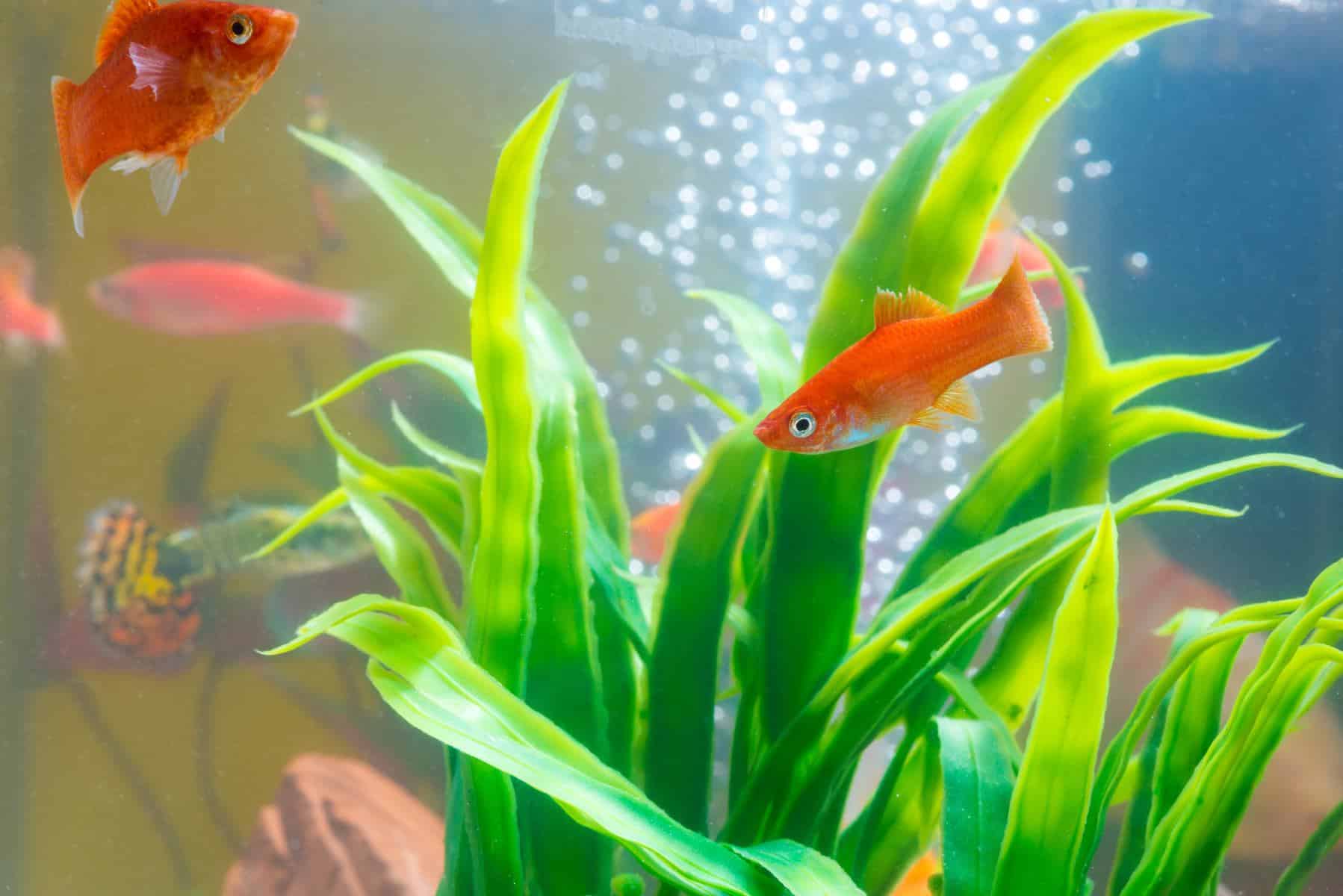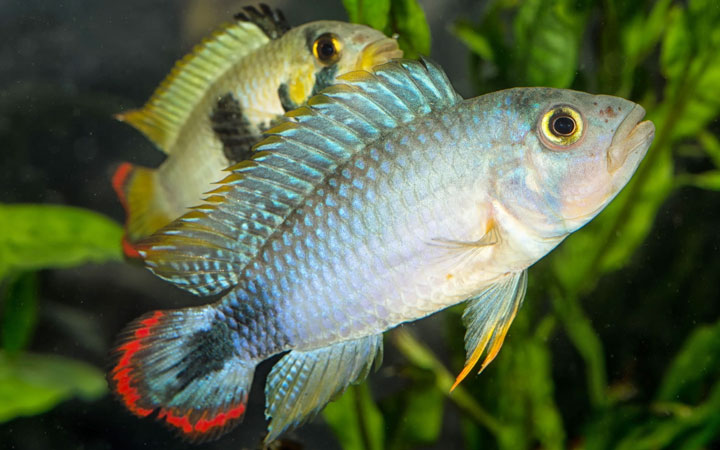Eliminate Ammonia Buildup: Tips for a Cleaner Fish Tank
To remove ammonia from a fish tank, perform regular water changes and use a water conditioner that neutralizes ammonia. Ensuring a healthy environment for fish is crucial for their well-being.
One of the most significant factors in maintaining an aquarium’s health is balancing its chemical composition. High ammonia levels in aquarium water are toxic for fish and can quickly escalate into a severe problem if left untreated. However, removing ammonia from a tank is simple and straightforward.
In this guide, we will explore the best methods to keep ammonia levels low and ensure the comfort and longevity of your aquatic pets. Whether you have a new aquarium or a mature one, these tips will help you keep your fish and water healthy.

Credit: www.amazon.com
Common Causes Of Ammonia Buildup In Fish Tanks
Ammonia buildup is a common issue that many aquarium owners face. It can lead to serious health problems for your fish and can even be fatal. In this section, we will discuss the most common causes of ammonia buildup in fish tanks, so you can prevent this issue from happening.
Overfeeding
Overfeeding is one of the biggest causes of ammonia buildup in fish tanks. When you feed your fish more than they can eat, the uneaten food will start to decompose. This process releases ammonia and other harmful chemicals into the water, which can be harmful to your fish.
Here are some signs that you might be overfeeding your fish:
- Excessive algae growth
- Cloudy water
- Foul odor
To prevent ammonia buildup due to overfeeding, only feed your fish what they can eat within two minutes and remove any uneaten food.
Uneaten Food And Waste
Uneaten food and waste are also significant contributors to ammonia buildup in fish tanks. When waste and food particles break down, they produce ammonia and other toxins. To combat this issue, it’s essential to keep your tank clean by doing regular water changes and vacuuming the substrate.
Here are some of the signs that you might have a buildup of uneaten food or waste:
- High nitrate levels
- Algae growth
- Cloudy water
Regular cleaning and maintenance of the tank can help prevent these issues and keep your fish happy and healthy.
Lack Of Proper Filtration
Proper filtration is crucial for maintaining a healthy fish tank environment. If your filter is not working correctly, it can lead to ammonia buildup in the water. Here are some signs that your filter might not be working correctly:
- Cloudy water
- Low oxygen levels
- Strong ammonia odor
To prevent ammonia buildup due to poor filtration, make sure to clean your filter regularly and replace any broken parts.
Overcrowded Tanks
Overcrowding in a fish tank can also lead to ammonia buildup. When there are too many fish in the tank, there will be an excess amount of waste and uneaten food, leading to the release of ammonia and other toxins.
Some signs of an overcrowded fish tank include:
- Poor water quality
- Stressed fish
- Sluggish fish
To prevent overcrowding, make sure that you follow the proper guidelines for the number of fish you can have in a tank. It’s also important to consider the size of your fish when determining how many can share a tank.
By taking steps to prevent ammonia buildup in your fish tank, you can provide a healthy and happy environment for your fish to thrive.
Tips For Preventing Ammonia Buildup
Maintaining a fish tank can be a rewarding hobby, but it also requires proper care to keep the fish healthy and happy. Ammonia buildup is a common issue that can be harmful to fish if left untreated. Here are some tips for preventing ammonia buildup in your fish tank.
Feed Fish Only What They Can Eat In A Few Minutes
Overfeeding fish is a common mistake that can lead to uneaten food and waste buildup in the tank. To prevent this, only feed fish what they can eat within a few minutes. This helps to minimize the amount of uneaten food that may sink to the bottom of the tank and decay over time, causing an increase in ammonia levels.
Clean The Tank Regularly And Remove Uneaten Food And Waste
Regular maintenance is essential for a healthy fish tank. Cleaning the tank regularly helps to remove any uneaten food and waste that may have accumulated on the tank bottom or decorations. This can be done by vacuuming the gravel and scrubbing the tank walls with a special tool.
By doing this, you can prevent ammonia buildup and maintain good water quality for your fish.
Use A High-Quality Filter
A good-quality filter can help to keep your tank clean and healthy. Filters remove debris and other contaminants from the tank, preventing them from decaying and increasing the ammonia levels. When choosing a filter, make sure it is adequate for the size of your tank and the number of fish you have.
Also, remember to clean and replace the filter media regularly.
Ensure Proper Aeration In The Tank
A well-aerated tank is essential for maintaining good water quality and preventing ammonia buildup. Make sure your tank has adequate aeration, such as an air stone or bubbler. These devices provide oxygen to the water and help to circulate the water, preventing stagnant areas where waste can build up.
You can also consider adding live plants to your tank, as they release oxygen and absorb toxins, reducing the ammonia levels.
By following these simple tips, you can prevent ammonia buildup in your fish tank and provide a healthy and happy environment for your fish to thrive in. Remember to always monitor water quality regularly and take action if there are any signs of ammonia buildup.
How To Eliminate Ammonia Buildup
Ammonia buildup is a common problem in fish tanks, and if it’s not addressed, it can prove deadly for your aquatic pets. Thankfully, there are a few things you can do to get rid of ammonia from your fish tank.
Here are some effective ways to eliminate ammonia buildup:
Testing Water Regularly For Ammonia Levels
Water testing is the first step you should take when trying to eliminate ammonia buildup. Regularly test the water in your fish tank for ammonia levels using a water testing kit. You can test the water once or twice a week or every day if you suspect there’s a spike in ammonia levels.
Here’s how to test the water:
- Fill a test tube with water from the fish tank
- Add the test solution to the test tube
- Wait for a few minutes for the color to change
- Compare the color to the chart to determine the ammonia levels
Performing Regular Water Changes
Performing regular water changes is another effective way to eliminate ammonia buildup from your fish tank. Water changes can remove excess ammonia, and the frequency of these changes depends on the size of your fish tank, the number of fish you have, and the filtration system you use.
Here’s how to perform a water change:
- Use a siphon to remove water from the tank
- Replace the removed water with fresh water
- Add water conditioner to neutralize the chlorine in the new water
Adding Beneficial Bacteria To The Tank
Beneficial bacteria can help eliminate ammonia buildup in your fish tank by converting ammonia into nitrite and then into nitrate, which is less toxic. These bacteria can be found in the filter media, gravel, and the surface of the tank.
However, sometimes the number of bacteria in the tank is not enough. You can boost the numbers of beneficial bacteria by adding a bacterial supplement to the tank. Here’s how to add the supplement:
- Follow the instructions on the bottle to determine the amount to add
- Add the supplement to the filter or directly into the water
- Wait for the bacteria to settle before adding fish
Using Activated Carbon In The Filter
Activated carbon can also help eliminate ammonia buildup in your fish tank by removing organic waste, chemicals, and impurities from the water. It’s an effective way to keep the water clean and odor-free. Here’s how to use activated carbon in the filter:
- Place the activated carbon in the filter cartridge
- Replace the filter cartridge every month or as directed by the manufacturer
By testing the water regularly, performing regular water changes, adding beneficial bacteria, and using activated carbon in the filter, you can effectively eliminate ammonia buildup in your fish tank. Remember to follow the instructions carefully and make sure that your fish are healthy and happy.
Frequently Asked Questions Of How To Remove Ammonia From Fish Tank
How Often Should I Change Water In A Fish Tank To Remove Ammonia?
To remove ammonia from your fish tank, you should change 10-20 percent of water every week. When your aquarium has high ammonia levels, replace 50% of water then test for ammonia again before adding any fish.
Can I Use A Filter To Remove Ammonia From The Fish Tank?
Yes, a filter can help remove ammonia from a fish tank. It contains beneficial bacteria that convert ammonia into less toxic compounds nitrite and nitrate. Ensure to clean your filter regularly to prevent clogging as it will impede filtration.
How Do I Detect Ammonia Levels In My Fish Tank?
You can detect ammonia levels in your aquarium by using a water test kit. Follow the instructions on the kit to take a water sample, and within minutes, you’ll get the results. It’s best to test water quality weekly to maintain a healthy environment for your fish.
What Is The Source Of Ammonia In My Fish Tank?
Ammonia is a byproduct of fish waste and their uneaten food, and it’s produced by decaying plants and organic material. Uneaten food and dead fish should be removed as soon as possible. Overfeeding fish causes excess ammonia in the tank.
How Do I Lower Ammonia Levels In My Fish Tank?
Lowering ammonia levels in a fish tank is achieved by performing a water change, not overfeeding your fish, adding more live aquatic plants, using activated charcoal in your filter, and ensuring proper filtration. Note that running activated carbon decreases the effectiveness of medications if you’re treating a fish.
Is Ammonia In Fish Tank Harmful To Humans?
While ammonia is toxic to fish, it can also be harmful to humans. Inhaling ammonia can irritate your lungs and cause serious health problems. Ensure good ventilation, use gloves and protective goggles when maintaining your aquarium if you notice high ammonia levels.
Conclusion
Overall, removing ammonia from a fish tank is a crucial step towards maintaining a healthy and thriving aquarium. Keeping your fish in an environment with high levels of ammonia can lead to serious health problems and even death. By following the tips mentioned in this blog post, you can successfully remove ammonia from your fish tank and provide a clean and safe habitat for your aquatic pets.
Remember to test your water regularly, perform frequent water changes, and use appropriate filtration to prevent ammonia buildup. Additionally, consider introducing live plants or beneficial bacteria to your aquarium to help with natural ammonia removal. With these steps, you can ensure that your fish will not only survive but thrive in their home.






